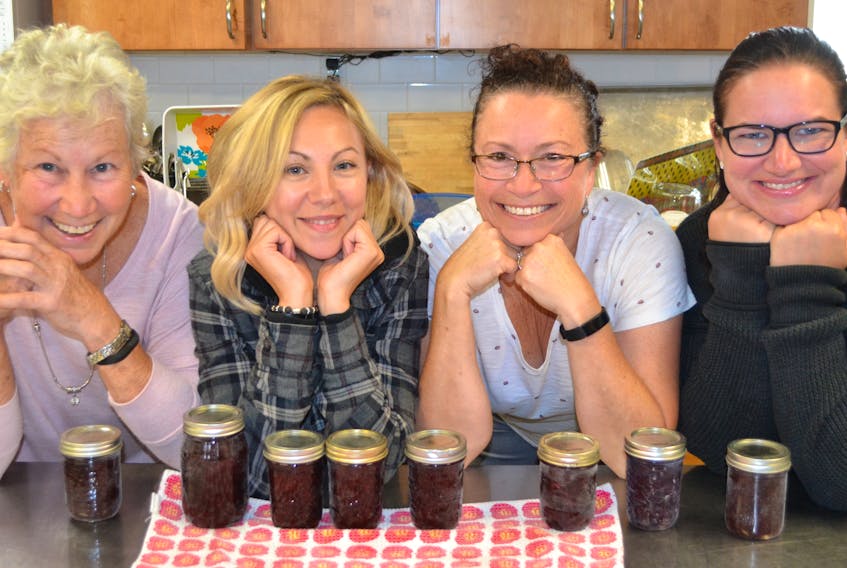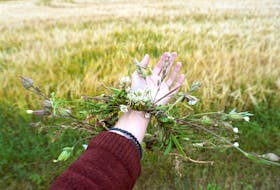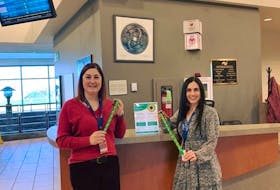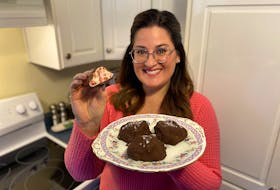MILTON STATION, P.E.I. — Making jam isn’t as easy as it looks.
The seemingly simple mixture of fruit and sugar held together by pectin strands can, at times, be both beautiful and maddening.
Whether it’s testing to see that the jam has set or placing the filled jars on a rack in a canner, with enough hot water to cover their tops and then allowing them to boil, there’s a lot of science involved.
That’s what Lori Fagan discovered when she decided to make jam at home recently.
After cutting the fruit, measuring the sugar and the water and mixing it all together in a big pot on the stove she cooked everything until it boiled, like the recipe told her.
But, when she took it off the heat and started ladling it into sterilized jars, things didn’t go as smoothly.
“The jam came out too thick because I boiled it too long. Then, when we went to use it, it was hard to get out of the bottle,” says the Stanhope resident, who was facing a dilemma.
With so many wild blueberries and blackberries waiting to be harvested in her backyard and limited space in her freezer, how was she going to preserve them before the first frost?
“I don’t like seeing berries go to waste.”
So, Fagan signed up for the Learn How to Preserve workshop at Milton Community Hall on Tuesday. Given by P.E.I. home economist Margaret Prouse it covered all the steps involved in making and preserving plum jam.
“I’m here to learn the basics. I want to be sure I’m doing it right,” says Fagan, one of 16 people at the session.
Scott MacDonald came to the workshop because he likes to cook and he likes trying new things.
"I’m retired now so I have time on my hands,” says MacDonald, who lives in East Royalty.
For Kathy Corbett, making jam is a family tradition.
“My mom was a farmer’s wife and she made pickles and jams, and I really wanted to keep these traditions in the family. I also like to give (the finished product) to my mum and dad who aren’t able to make it anymore,” the Warren Grove resident says.
Alice Whitty of Charlottetown is adding to her knowledge of the tradition.
“I’ve learned how exact Margaret is with her measurements. I usually scoop my measuring cup (into a bag of sugar) and not level it off.”
“I also learned that bottled lemon juice has more consistent acidity than fresh lemons, when making jam. I also saw Margaret run a little spatula around the top of the bottle to get the air out.”
At the end of the session, Fagan is happy with what she’s learned. And she’s ready to tackle the berries in her backyard.
“I’m preparing for my next preserve session. I’ll be making blueberry jam."
Plum Jam
Adapted from Andress, Elizabeth L. and Judy A. Harrison, “So Easy to Preserve, Fifth Edition”, Cooperative Extension, University of Georgia, Athens, 2006
2 L (2 quarts) chopped tart plums (about 2k/4 lb)
1.5L (6 cups) sugar
375 ml (1 ½ cups) water
50 ml (1/4 cup) lemon juice
- Sterilize canning jars.
- Combine all ingredients; bring slowly to boiling, stirring occasionally until sugar dissolves.
- Cook rapidly almost to jellying point, about 20 minutes. As mixture thickens, stir frequently to prevent sticking. Test for set.
- Pour hot jam into hot jars, leaving 0.5 cm (1/4 inch) head space. Wipe jar rims and apply two-piece lids.
- Process for 5 minutes in a boiling water bath.
- Turn off heat. Uncover and let jars stand in canner for 5 minutes. Lift rack. With canning tongs transfer jars to cooling rick; let cool, undisturbed for 24 hours.
Yield: About 8, 250 ml bottles (half pints)
Go natural
When preserving fruit, without Certo or Bernardin pectin, two levels of ripeness are desirable. Slightly under-ripe fruit has more natural pectin. It also has more acid. Both pectin and acid are needed to make jam or jelly. Fully ripe fruit is needed because it has a better taste. Flavour is a key thing when making jams and jellies. Therefore, use three parts of fully-ripened fruit to one part of under ripe fruit to get a good blend.
Source: P.E.I. home economist Margaret Prouse









